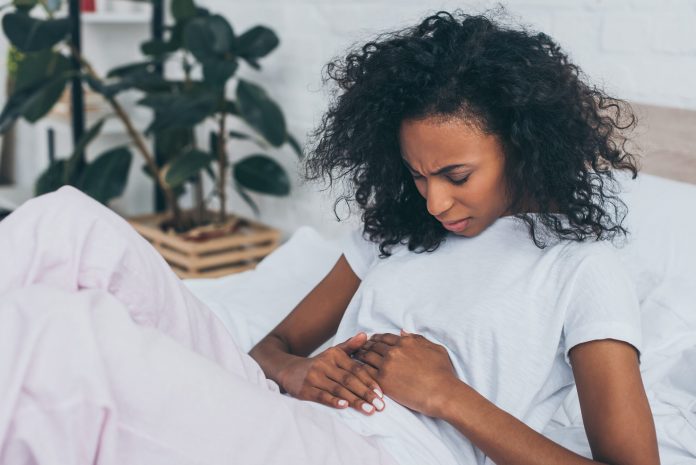“I felt something hard in my stomach, but it wouldn’t be there all the time. I went for a Pap smear and I told the nurse practitioner that I felt something hard in my stomach,” Ronda Penrice says. “She told me, ‘Maybe it’s something you ate.'”
Penrice pauses; her disgust is evident in the silence. Then she adds, “It’s very discouraging how little the medical community cares about women’s health.”
After the fruitless visit with the nurse practitioner, Penrice did her own research. Her self-diagnosis: fibroids.
Uterine Fibroids: What They Are
Uterine fibroids, non-cancerous tumors in the wall of the uterus, can grow as a single tumor or as a cluster. Though most fibroids cause no symptoms, women who do experience symptoms may have heavy bleeding, pain during sex, and complications during pregnancy and labor. Black women are three times more likely to have fibroids than white women, and they are more likely to be diagnosed at an earlier age, to have larger fibroids that grow quickly and to have symptoms.
“I had heard about fibroids,” the Atlanta writer says. “When I was in grad school I remember girls talking about them. And I remember women had hysterectomies. I remember thinking, ‘I’ve never been around so many black women with hysterectomies,’ but nobody was talking about why.”
Fibroids Confirmed
For a while Penrice was one of the fortunate ones. Other than that hard belly bulge she first noticed seven years ago, she had no symptoms. Still, she sought a second opinion. The new doctor confirmed her diagnosis, but he mentioned surgery, so she sought a third opinion.
“I kept retreating,” she says. “Whenever surgery was presented as an option, I didn’t want to do that.”
She returned to Google, seeking more information, but couldn’t find any way to keep her fibroids from growing. She did make a few connections on her own:
1) Her stress level and emotional health played a part. “My fibroids got worse during the recession,” she says. She points out that Jewel Pookrum, M.D., and Christiane Northrup, both women’s health advocates, have connected fibroids to unresolved emotional issues.
2) There’s probably a lifestyle connection to fibroids. ‘I wasn’t living a super unhealthy life. I was eating fish and veggies. I was walking every day,” she says. “But I was eating a lot of processed foods.”
Finding Treatment
In addition to eliminating processed foods, Penrice has also given up soy products and cut back on dairy and pastries. She has also participated in three clinical trials. And she tries to keep her emotional well-being in check. But her fibroids have continued to grow. “They are quite large,” she says. “My bleeding is heavier. I have pain. After they grow to a certain size, it’s not as easy to shrink them.”
And though she’s now more open to surgery (“especially now that there are more procedures where they don’t cut you as much”), she wants to see more research dedicated to this issue.
“Doctors say, ‘All women have them. They’re small. Don’t worry about them.’ I think that’s the problem right there. They should say it’s not normal. I don’t care if everybody has them. If you had random tumors and growths in men’s bodies, it would be taken more seriously,” Penrice says. “Surgery can remove them, but [if you don’t have a hysterectomy] they come back. You have to look at why they’re there. I’m interested in the root cause. Why do they happen in the first place?
“Let’s make people aware of this. And then let’s dedicate some research.”





